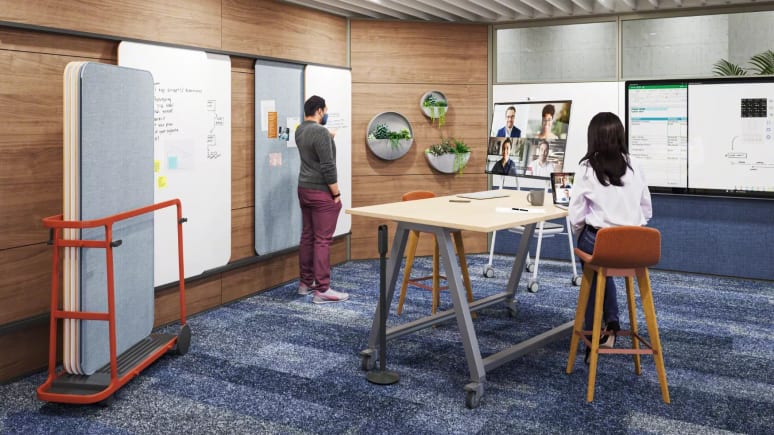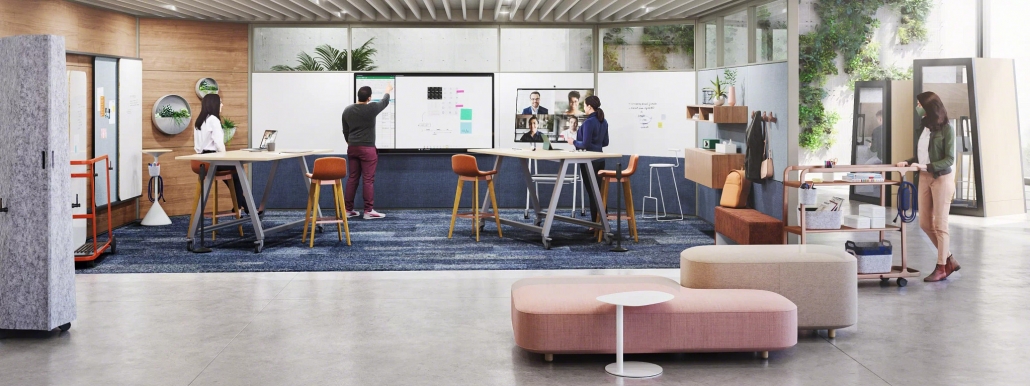Steelcase Webinar: Making Hybrid Work

Last week, Steelcase hosted a panel with global leaders in finance, technology, and the workplace to share strategies and learnings on hybrid working.
By nature, the hybrid model involves a mixed presence with some physically in the office and some virtually. Every business will have a different formula of employee, team and business needs and there is no ‘one size fits all’ approach.
The webinar attendees from Steelcase, Microsoft and Forbes agreed that piloting new ways of working was the best way to navigate the shift and find the right bespoke balance. For example, Microsoft have placed sensors around their buildings to measure occupancy, what activities happen where and how rooms are utilised. They are also issuing employee polls to encourage feedback on changes.
Steelcase are giving employees the control over when they are in the office or working elsewhere, but still having their offices as a primary workspace. Forbes have found some clients are grouping individuals depending on interaction needs, with some having core hours for all team members to be present.

There is a big focus on teams making decisions as all argue they are most insightful on what tasks can be achieved virtually and which need in-person collaboration. Being transparent with schedules helps teams arrange when is most important to be in.
To streamline hybrid meetings, it is essential to offer all employees the same opportunity to collaborate and contribute. The discussion raised the importance of introducing and checking in with remote workers more intentionally. Similarly, it was recommended to have a designated ‘officer’ to send across pictures of whiteboard sketches, for example, to ensure full visibility for remote participants.
To conclude, Donna Flynn of Steelcase commented: “This is a rare moment in history to make intentional changes for your company, your organisation and your people. Think about what shifts to make for your organisation and culture and use as an opportunity to make changes through new policies, principles and spaces.”
Our Hybrid Working whitepaper further explores how to establish new ways of working and can be accessed here.

